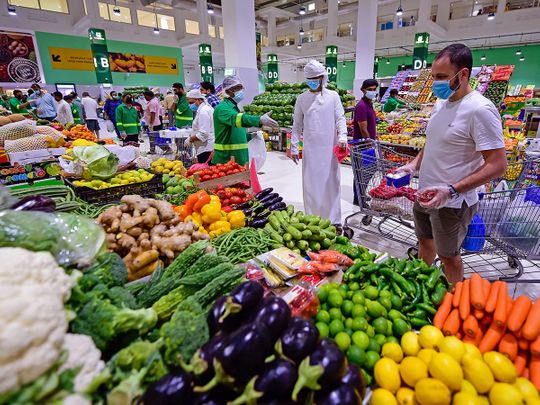
Despite being one of the oldest, the F&B industry didn’t changed much according to the times. A clear indication is the number of online marketplaces serving the F&B industry being extremely low.
The number becomes even more segmented when it comes to the B2B food and beverage industry. For years, ecommerce was considered to be a B2C game, a channel best suited for consumer brands.
However, with digital transformation, traditional F&B is reshaping operations by taking technology into consideration. B2B ecommerce is now challenging the authority of traditional sales channels, with estimates of it reaching $1.8 trillion by 2023, accounting for 17 per cent of all B2B sales in the US.
According to research by Gartner, 57 per cent of organizations cite “delivering the desired customer experience” as a critical challenge faced in B2B endeavors. B2B buyers have been trained to expect seamless, high-quality online purchasing experiences.
It is worth mentioning that the millennial generation is taking over the executive-level realms at companies, and hence brands looking to do business with them need to understand and be present on the platforms their potential customer wants to interact on.
An estimated 42 per cent of millennials use real-time messaging and social media while at work. This means that, as B2B buyers, they favor omnichannel communication for instantly gratifying information, giving them everything they need in the most streamlined manner possible.
Gartner research also indicates that 80 per cent of buyers now use digital information at each stage of the purchasing process, and 61 per cent and 33 per cent consult a supplier website or want to complete their B2B purchase online without a sales representative. As a result, B2B suppliers have witnessed, instead of picking up the phone to call a vendor for pricing or engaging directly with sales reps, B2B buyers are demanding the option to self-serve online i.e., to research, find, buy, and manage their purchases through a single web-based platform.
Introducing technological changes, especially in F&B sector, can not only help with reducing costs and a competitive advantage, but also prevent organizations from incurring huge losses. Igor Nikolenko, CEO of SupplyMe, suggests big data and AI to optimize operations and empower these organizations to solve real business problems. Some of the elements where technology can be efficiently used include:
Inventory management
The HoReCa (hotel-restaurant-café) sector has been one of the fastest-growing verticals. With social distancing and contactless communication becoming the new norm, the sector now heavily relies on digital power to carry out its operations.
Vendor evaluation, spend analytics and demand forecasting are some of the most popular benefits of data analytics in the F&B sector.
Consensus demand planning
Traditional product forecasting is based on statistical time-series techniques that create forecasts using sales history. With fast changing customer behavior, the past is rarely a great predictor of the future.
In this scenario, demand sensing capabilities and demand planning capabilities can help F&B companies respond to micro-market changes, to improve fill rates and reduce distressed product. Typical demand sensing inputs that can be used to improve forecasts include daily sales order history, daily point of sale (POS), syndicated data, market intelligence, social media, location square footage, foot traffic and even weather.
Wholesalers can optimize their supply chain and align their deals with their accordingly. This helps to minimize costs through optimization of warehouse turnover, which leads to minimization of frozen capital and, eventually, applying a lean approach.
Supply chain management
The F&B supply chains tend to be inventory-rich with average days of inventory still hovering in the high 30 days of coverage. It takes on unique challenges, starting with intake of raw ingredients to making sure the right amount of product gets to the right place, under increasing food safety and quality scrutiny.
The optimal flow of F&B goods to consumers is vital for brand protection. Fortunately, the promise of granular product journey tracking and temperature monitoring from origin through all the nodes and custody hand-offs in the supply chain is within reach.
During the last year, we have witnessed rapid increase in direct-to-customer deliveries, with 40 per cent of essential items now being bought online. RFID tags applied to food supply chains can provide full visibility and traceability along the whole chain and trace perishable food packages from their production source to disposal point.
The technology has proven its ability to transmit information with high speed and accuracy, and in great capacity.









